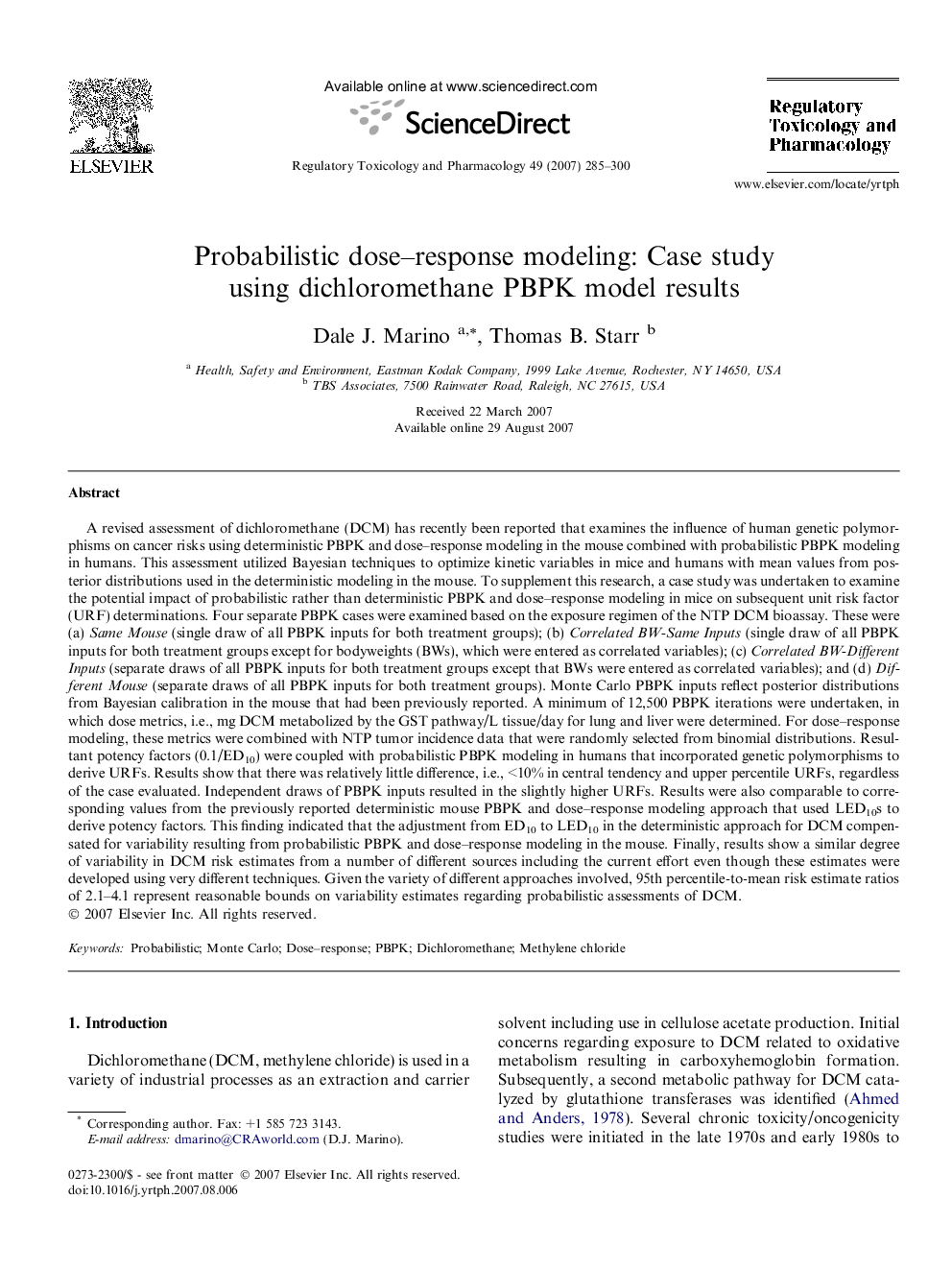| کد مقاله | کد نشریه | سال انتشار | مقاله انگلیسی | نسخه تمام متن |
|---|---|---|---|---|
| 2592758 | 1132044 | 2007 | 16 صفحه PDF | دانلود رایگان |

A revised assessment of dichloromethane (DCM) has recently been reported that examines the influence of human genetic polymorphisms on cancer risks using deterministic PBPK and dose–response modeling in the mouse combined with probabilistic PBPK modeling in humans. This assessment utilized Bayesian techniques to optimize kinetic variables in mice and humans with mean values from posterior distributions used in the deterministic modeling in the mouse. To supplement this research, a case study was undertaken to examine the potential impact of probabilistic rather than deterministic PBPK and dose–response modeling in mice on subsequent unit risk factor (URF) determinations. Four separate PBPK cases were examined based on the exposure regimen of the NTP DCM bioassay. These were (a) Same Mouse (single draw of all PBPK inputs for both treatment groups); (b) Correlated BW-Same Inputs (single draw of all PBPK inputs for both treatment groups except for bodyweights (BWs), which were entered as correlated variables); (c) Correlated BW-Different Inputs (separate draws of all PBPK inputs for both treatment groups except that BWs were entered as correlated variables); and (d) Different Mouse (separate draws of all PBPK inputs for both treatment groups). Monte Carlo PBPK inputs reflect posterior distributions from Bayesian calibration in the mouse that had been previously reported. A minimum of 12,500 PBPK iterations were undertaken, in which dose metrics, i.e., mg DCM metabolized by the GST pathway/L tissue/day for lung and liver were determined. For dose–response modeling, these metrics were combined with NTP tumor incidence data that were randomly selected from binomial distributions. Resultant potency factors (0.1/ED10) were coupled with probabilistic PBPK modeling in humans that incorporated genetic polymorphisms to derive URFs. Results show that there was relatively little difference, i.e., <10% in central tendency and upper percentile URFs, regardless of the case evaluated. Independent draws of PBPK inputs resulted in the slightly higher URFs. Results were also comparable to corresponding values from the previously reported deterministic mouse PBPK and dose–response modeling approach that used LED10s to derive potency factors. This finding indicated that the adjustment from ED10 to LED10 in the deterministic approach for DCM compensated for variability resulting from probabilistic PBPK and dose–response modeling in the mouse. Finally, results show a similar degree of variability in DCM risk estimates from a number of different sources including the current effort even though these estimates were developed using very different techniques. Given the variety of different approaches involved, 95th percentile-to-mean risk estimate ratios of 2.1–4.1 represent reasonable bounds on variability estimates regarding probabilistic assessments of DCM.
Journal: Regulatory Toxicology and Pharmacology - Volume 49, Issue 3, December 2007, Pages 285–300